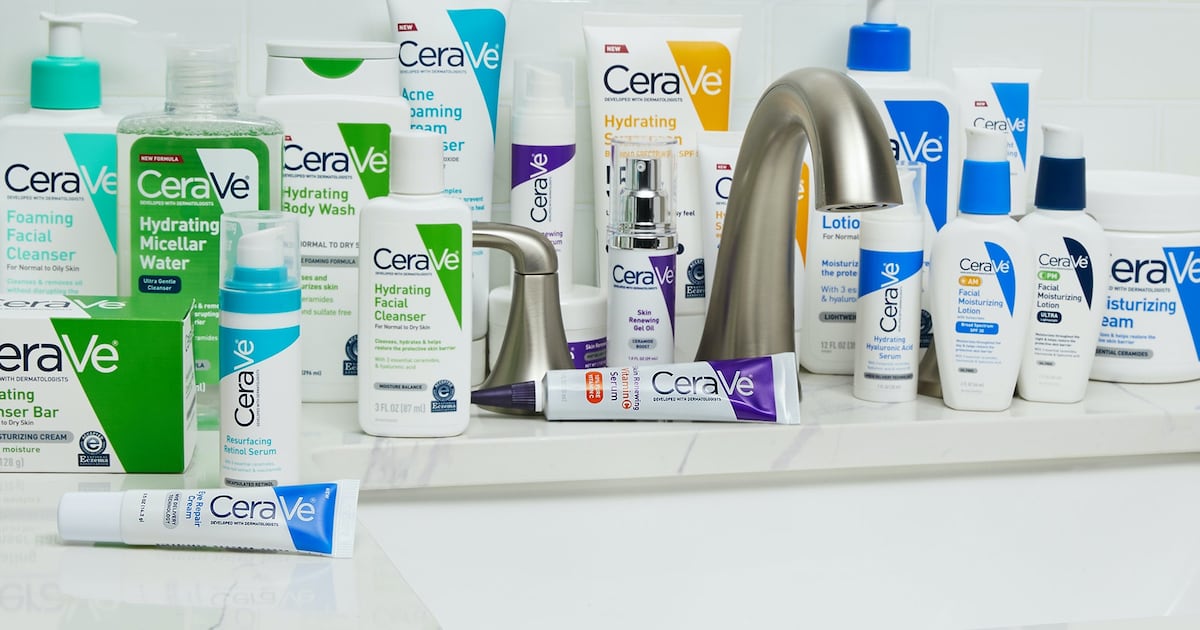LâOréalâs third-quarter sales, announced Tuesday, had an unwelcome surprise: its dermatological beauty division, which operates buzzy and viral skincare brands like Cerave and Skinceuticals, hugely missed analyst expectations; it grew 0.8 percent to $1.77 billion against estimates of 11 percent.
The division had been a blockbuster since it was formed in 2022, growing more than 20 percent each quarter and becoming a key area for the French conglomerate. But in the second quarter, it missed expectations for the first time, with growth slowing to 10.8 percent compared to analyst expectations of 17.4 percent.
The segmentâs decline contributed to 3.4 percent like-for-like sales growth overall, missing estimates of 6 percent, compounded by a not unexpected â but equally unwelcome â 6.5 percent sales contraction in China. In the aftermath of the report, the companyâs share price dropped 3.7 percent, having already plummeted 20 percent since June.
Chief executive Nicolas Hieronimus said deceleration in the US was the âbiggest culpritâ for the dermatological beauty divisionâs poor performance on a call with analysts on Tuesday, reiterating a message from its half-year August earnings, though he also noted a slowdown in product innovation. An unfavourable comparison basis with the previous year, which included a one-time insurance payout also dragged on results, but even offsetting that, âItâs lower than the previous quarters without a shadow of a doubt,â said Hieronimus.
Softened spending in the US has been noted by LâOréalâs peers, including Coty and the prestige beauty arm of personal care giant Unilever. But whatâs more unique to LâOréalâs dermatological division is its reliance on ailing American drug stores, a primary point of distribution for its Vichy, Cerave and La Roche Posay lines. In July, CVS reported a 5.1 percent drop in front-of-store revenues, Walgreensâ retail sales decreased 3.5 percent in its 2024 fiscal year, while Rite Aid emerged from bankruptcy in September after a year under administration.
The distinction of dermatologist-approved or at least clinically proven products is also no longer unique to LâOréal. Competitive efforts by incumbents and the entrance of more indie brands are destabilising its grip.
Molly Wylenzek, an analyst at Jefferies, noted dermatological beauty was growing in other markets, describing the US as the most penetrated market for clinical skincare in the world. âIt could be a channel issue, it could be saturation ⦠maybe weâre reaching a natural ceiling,â she said.
Shifting Sands
LâOréal created the dermatological beauty unit from the ashes of its former âactive cosmetics division,â divesting poorer-performing natural skincare lines Sanoflore and Decléor and investing heavily in clinically-backed brands such as Cerave, Skinceuticals, and Skinbetter Science, which it acquired in 2022. The unit is diverse in terms of price: a Cerave cleanser might be as little as $14, while a Skinceuticals serum is as much as $150.
The move was perfectly timed; post-pandemic brands with a clinical pedigree skyrocketed in popularity, and the group invested heavily in dermatologist outreach, ensuring that its products would be recommended by and distributed in doctorâs offices. In 2021, Cerave claimed the title of most dermatologist-recommended brand from longtime holder Neutrogena.
In its second-quarter earnings in August, Hieronimus cited increased competition as a reason for its slowdown in addition to his first warnings about drugstore decline. Brands like Estée Lauder-owned The Ordinary and independent British label Byoma can compete on price â and increasingly, on buzz â and focus distribution solely on retailers like Target and Ulta Beauty, but for the likes of Vichy and Cerave, mass drugstores are the biggest channel. Neil Saunders, managing director at analytics firm GlobalData, said stores like Target have done a better job of curating the customer experience than drugstores, which have increasingly been keeping products behind locked glass doors.
Hieronimus and LâOréal chief financial officer Christophe Babule said in markets other than the US, dermatological beauty had performed better, with Europe, Asia and Australia all noted as regions with more positive progress.
âIn markets where dermatological skincare is really nascent, [LâOréal] are building the market from the ground up,â said Wylenzek, adding that she thinks low double-digit growth for the division by year-end is realistic, buoyed by non-US markets. âA rising tide lifts all boats ⦠but the US is no longer contributing to the rising tide,â she said.
To beat the slump and regain the all-important US foothold, LâOréal needs to keep investing in splashy marketing and new products â and also to avoid losing its competitive edge, especially with fickle Gen-Z shoppers. A new Cerave shampoo line and body care range are on the horizon, Hieronimus added.
âThereâs a few young Gen-Z consumers in the US that left [LâOreal brands] to try a few other brands,â said Hieronimus. âItâs up to us to recruit them.â
Sign up to The Business of Beauty newsletter, your complimentary, must-read source for the dayâs most important beauty and wellness news and analysis.

